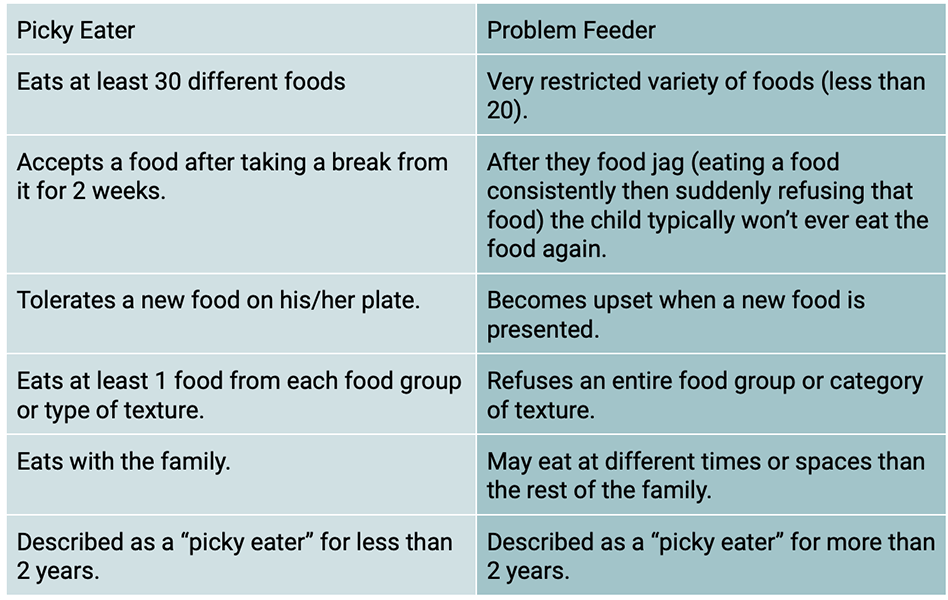If you’re child is showing signs of feeding difficulties, the SOS Approach to Feeding could help.
The SOS (Sequential-Oral-Sensory) Approach is a research-backed program that incorporates a whole-child perspective.
A Picky Eater vs. A Problem Feeder
Picky eating is considered to be a common stage of development. The SOS Approach to Feeding differentiates a child who would be considered to be a Picky Eater and one who is a Problem Feeder.

Identifying the Issue
The SOS Approach to Feeding involves looking at the 7 areas of human functions that are involved in eating. Finding where the breakdown is can help answer the question of why your child is showing refusals or other difficult behaviors during mealtime.
A comprehensive feeding evaluation assesses these 7 areas of human functioning that are involved in eating:
- Organ Systems
- Motor and Oral Motor Abilities
- Sensory Processing
- Learning History/Style/Capacity
- Development
- Nutrition
- Environmental Factors
A sensory processing disorder could be the reason why some kids only seem to eat crunchy foods, or refuse foods that have a certain texture.
The first step towards improving a child’s feeding skills is uncovering why he or she is showing signs of difficulties in the first place.
Play with a Purpose
According to the SOS Approach to Feeding, play can help desensitize a child to the cause of their anxiety during mealtime.
The Steps to Eating
Quality over quantity.
- Look at the food.
- Interact with the food without directly touching it to your skin (such as with a utensil).
- Smell (so the child’s body can process and manage the smell).
- Touch with the fingers, hands, body, and then mouth.
- Taste (starting with the tip of tongue, then putting the food in the mouth & spitting it out)
- Chew & swallow the food.
Additional Resources
Behaviors like these can be just the tip of the iceberg. A therapist trained in the SOS Approach to Feeding can assess what’s underneath the surface to identify the why behind a child’s difficult feeding behaviors.
If you have concerns about your child’s feeding skills, specialized services from a Speech Therapist or Occupational Therapist can help. An initial evaluation can help determine what difficulties your child is having. Ongoing individualized therapy can include techniques and a specialized approach to help improve these areas.
TherapyWorks offers speech therapy, occupational and physical therapy both in person (in Illinois, Michigan, and Ohio) and through teletherapy (nationwide). If you would like to learn more, or discuss your child’s specific needs, please don’t hesitate to reach out to TherapyWorks!








